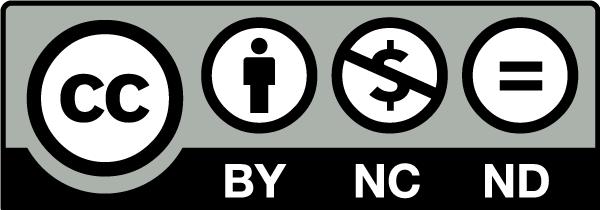Simplification and Easification of Legislative Provisions
The Way Forward
DOI:
https://doi.org/10.13136/2281-4582/2024.i23.1398Parole chiave:
linguistic analysis, drafting techniques, legislative expressions, simplification, easificationAbstract
This analysis takes into consideration the challenge of writing legislative provisions. Legislative expressions must be clear, precise, and unambiguous, on the one hand, and all-inclusive, on the other. A clever balance between the two is the essence of the craftsmanship of normative texts. The nature and extent of specification of legal scope, moreover, represents one of the most difficult tasks in legislative drafting. Based on the hypothesis that linguistics can provide drafters with a method for assessing the effectiveness of the legislator’s provisions, this study demonstrates that drafters often miss the focus of the policy concepts that they aim to communicate, and discusses the latest techniques to successfully achieve the desired conceptual focus.
Riferimenti bibliografici
Barnes, Jeffrey. “The Continuing Debate about ‘Plain Language’ Legislation: A Law Reform Conundrum.” Statute Law Review 2.2 (2006): 83-132.
Bhatia, Vijay K. Analysing Genre: Language Use in Professional Settings. London: Longman, 1993.
---.“Drafting Legislative Provisions: Challenges and Opportunities.” Commonwealth Association of Legislative Counsel/Loophole (2010): 5-15.
---.“Legal Writing: Specificity.” The Routledge Handbook of Forensic Linguistics. Edited by Malcolm Coulthard and Alison Johnson. London: Routledge, 2021. 37-50.
---.“Linguistic and Socio-pragmatic Considerations in Legislative Drafting.” Legislative Drafting and Linguistics 2.2 (2014): 169-183.
---. “Textual-mapping in British Legislative Writing.” World Englishes 1 (1987): 1-10.
---. Worlds of Written Discourse. London: Continuum, 2004.
Bowman, Geoffrey. “The Art of Legislative Drafting.” Amicus Curiae 64 (2006): 2-9.
Butt, Peter. Modern Legal Drafting: A Guide to Using Clearer Language. Cambridge: Cambridge University Press, 2013.
Campbell, Lisbeth. “Drafting Styles: Fuzzy or Fussy?”. Murdoch University Electronic Journal of Law 3.2 (1996): 17.
Chafe, Wallace. “Aspects of Discourse Analysis.” Brno Studies in English 34 (2008): 23-37.
Coode, George. On the Legislative Expressions or the Language of Written Law. Philadelphia: T. & J.W. Johnson, 1848.
Crystal, David and Derek Davy. Investigating English Style. London: Routledge, 1969.
Dewey, John. How We Think. New York: Dover Publications Mineola, 1997.
Driedger, Elemer A. A Manual of Instructions for Legislative and Legal Writing. Ottawa: Minister of Supply and Services Canada, 1982.
Engberg, Jan. “Legal Linguistics as a Mutual Arena for Cooperation: Recent Developments in the Field of Applied Linguistics and Law.” AILA Review 26 (2013): 24-41.
Fairclough, Norman. Analysing Discourse: Textual Analysis for Social Research. London: Routledge, 2003.
---. Language and Power. Harlow: Longman, 1989.
---. The Critical Study of Language. London: Longman, 1995.
Fjeld, Ruth V. “Interpretation of Indefinite Adjectives in Legislative Language.” Languages for Special Purposes: Perspectives for the New Millennium. Edited by Felix Mayer. Tübingen: Narr, 2001. 643-650.
Fowler, Roger, et. al. Language and Control. London: Routledge and Kegan Paul, 1979.
Fung, Spring Y.C. and Anthony Watson-Brown. The Template: A Guide for the Analysis of Complex Legislation. University of London: Institute of Advanced Legal Studies, 1994.
Galdia, Marcus. Legal Linguistics. Frankfurt: Peter Lang, 2009.
Gardner, Howard. Changing Minds: The Art and Science of Changing Our Own and Other People’s Minds. Boston: Harvard Business School Press, 2004.
Garzone, Giuliana. “Variation in the Use of Modality in Legislative Texts: Focus on Shall.” Journal of Pragmatics 57 (2013): 68-81.
Geeraerts, Dirk. “Cognitive Linguistics.” Handbook of Pragmatics. Edited by Jef Verschueren et al. Amsterdam: John Benjamins, 1995. 111-116.
Goddard, Murray J. “The Impact of Human Intuition in Psychology.” Review of General Psychology 13.2 (2009): 167-174.
Gotti, Maurizio. Investigating Specialized Discourse. Bern: Peter Lang, 2011.
Gotti, Maurizio and Marina Dossena. Modality in Specialized Texts. Bern: Peter Lang, 2001.
Haspelmath, Martin, et al. The World Atlas of Language Structures. Oxford: Oxford University Press, 2005.
Lakoff, George and Mark Johnson. Philosophy in the Flesh: The Embodied Mind and its Challenge to Western Thought. New York: Basic Books, 1998.
Langacker, Ronald W. Foundations of Cognitive Grammar. Vol.2: Descriptive Application. Stanford: Stanford University Press, 1991.
Langton, Nicola M. “Cleaning Up the Act: Using Plain English in Legislation.” Clarity 54 (2005): 28-32.
Pennisi, Giulia A. “Legislative Provisions in Context: A Linguistic Approach.” Statute Law Review 2.37 (2016): 101-115.
Scollon, Ron. “Action and Text: Towards an Integrated Understanding of the Place of Text in Social (Inter)action, Mediated Discourse Analysis and the Problem of Social Action.” Methods of Critical Discourse Analysis. Edited by Ruth Wodak and Michael Meyer. London: SAGE Publications, 2001. 139-195.
Solan, Lawrence M. “Private Language, Public Laws: The Central Role of Legislative Intent in Statutory Interpretation.” Georgetown Law Journal 93.2 (2005): 427-486.
---. “The Language of Judges.” Chicago: The University of Chicago Press, 1993.
Stefanou, Constantin. “Legislative Drafting as a Form of Communication.” Quality of Legislation Principles and Instruments. Edited by Luzius Mader and Marta Tavares de Almeida. Nomos: Baden-Baden, 2011. 308-320.
Talmy, Leonard. The Targeting System of Language. Cambridge: The MIT Press, 2017.
Tiersma, Peter. Legal Language. Chicago: Chicago University Press, 1999.
Tiersma, Peter and Lawrence M. Solan. Oxford Handbook of Language and Law. Oxford: Oxford University Press, 2012.
van Dijk, Teun A. “Contextual Knowledge Management in Discourse Production: A CDA Perspective.” A New Agenda in (Critical) Discourse Analysis. Edited by Ruth Wodak and Paul Chilton. Amsterdam: John Benjamins, 2005. 71-100.
---. Discourse Studies. London: Sage, 2007.
---. Discourse Studies: A Multidisciplinary Introduction. London: Sage, 1997.
---. Handbook of Discourse Analysis. London: Academic Press, 1985.
Xanthaki, Helen. Drafting Legislation: Art and Technology of Rules for Regulation. Oxford: Hart Publishing, 2014.
Xanthaki, Helen and Giulia A. Pennisi. “Crossing the Borders between Legislative Drafting and Linguistics: Linguists to the Aid of Legislative Drafters.” Explorations in Language and Law: Approaches and Perspectives. Edited by Girolamo Tessuto. Aprilia: Novalogos, 2012. 83-109.
---. “Legislative Drafting e Linguaggio: Ipotesi di Semplificazione del Testo Normativo.” Studi Parlamentari e di Politica Costituzionale 185/186 (2016): 41-71.
Williams, Christopher. “Legal English and Plain language: an Introduction.” ESP Across Culture (2004): 111-124.
---. The Impact of Plain Language on Legal English in the United Kingdom. New York: Routledge, 2023.
Wodak, Ruth and Michael Meyer. Methods of Critical Discourse Analysis. London: Sage, 2001.
Downloads
Pubblicato
Fascicolo
Sezione
Licenza
Copyright (c) 2024 Giulia Adriana Pennisi

Questo lavoro è fornito con la licenza Creative Commons Attribuzione - Non commerciale 4.0 Internazionale.
Iperstoria è una rivista accademica ad accesso libero.
a. Gli autori detengono il copyright e danno alla rivista il diritto per la prima pubblicazione con il contributo sotto licenza Creative Commons che permette di condividere l’articolo con il riconoscimento della prima pubblicazione su questa rivista.
b. Gli autori possono inoltre stabilire ulteriori direttive contrattuali per la distribuzione non esclusiva della versione del contributo pubblicata sulla rivista (es. ripubblicarlo in archivi istituzionali o in un volume), con uno specifico riconoscimento della prima pubblicazione su questa rivista. Chiediamo pertanto agli autori di contattarci nel caso di eventuali ripubblicazioni.







